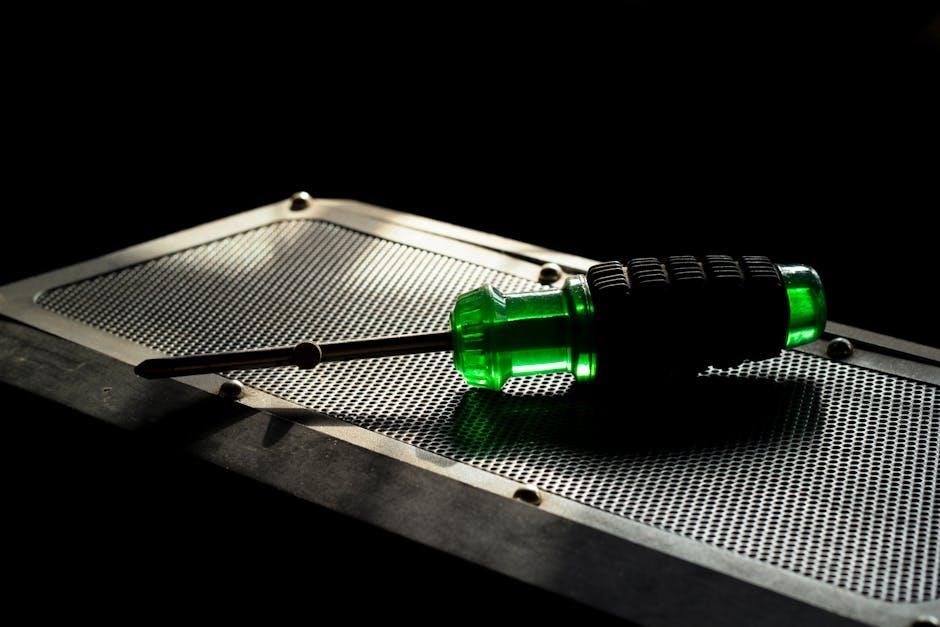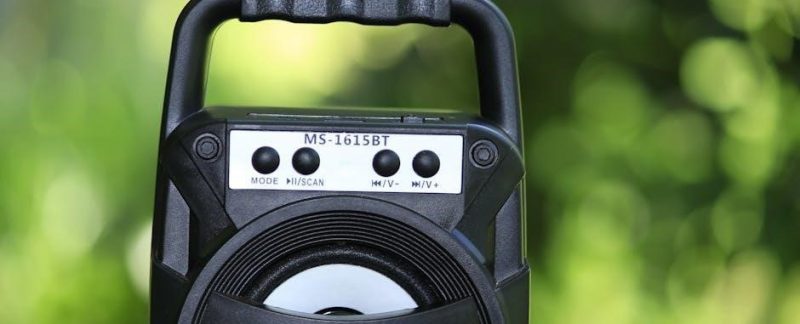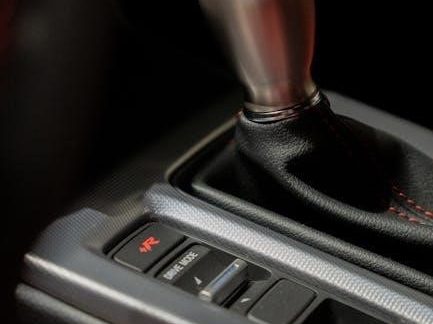Sharp XE-A207 Manual: A Comprehensive Article Plan (11/22/2025 03:41:30)
This article details the Sharp XE-A207 service manual, a vital resource for technicians and users alike, offering repair guidance and maintenance procedures for XE-A207/A23S and XE-A407/A43S models.
The Sharp XE-A207 is an electronic cash register designed for retail environments, offering reliable transaction processing and management features; this manual supports its operation and servicing effectively.
Overview of the XE-A207 Cash Register
The Sharp XE-A207 cash register represents a robust solution for businesses needing dependable point-of-sale functionality. It’s engineered for ease of use, featuring a clear display and intuitive key layout, streamlining transactions for both operators and customers. This model supports various payment methods and offers essential reporting capabilities, aiding in inventory control and sales analysis.
Designed for efficiency, the XE-A207 facilitates quick and accurate calculations, minimizing errors and improving customer service. Its compact design makes it suitable for businesses with limited counter space. Furthermore, the register’s construction prioritizes durability, ensuring long-term reliability even in high-volume environments. The service manual provides detailed insights into its internal components and operational mechanisms, enabling skilled technicians to perform effective repairs and maintenance, maximizing the register’s lifespan and minimizing downtime.

Target Audience for this Manual Information
This comprehensive manual is primarily intended for qualified electronics technicians specializing in point-of-sale (POS) systems. It assumes a foundational understanding of electronic repair principles and cash register mechanics. The detailed schematics, disassembly guides, and troubleshooting procedures are geared towards professionals responsible for maintaining and repairing the Sharp XE-A207 and related models (A23S, A407, A43S).
However, experienced DIY enthusiasts with a strong electronics background may also find the manual valuable, provided they exercise extreme caution and adhere to all safety guidelines. It’s crucially important to note that this document is for after-sales service only and isn’t a user guide for general operation. Attempting repairs without proper training could void warranties and potentially cause damage or injury. The manual’s content is subject to change without prior notice.

Accessing the Sharp XE-A207 Manuals
Sharp XE-A207 manuals, including user guides and service documentation, are readily available online in PDF format for convenient viewing and download.
Online Resources for Manuals (PDF)
Numerous online platforms host the Sharp XE-A207’s service and user manuals in easily accessible PDF format. These resources provide a convenient way for both professional technicians and end-users to obtain detailed information regarding the cash register’s operation, maintenance, and repair. Websites dedicated to electronic repair manuals frequently catalog these documents, allowing for quick searches and downloads.
Furthermore, dedicated Sharp support websites often feature a comprehensive archive of manuals for their products, including the XE-A207 series. Users can typically browse by model number or utilize a search function to locate the specific manual they require. The availability of these PDFs ensures that essential documentation is readily available, eliminating the need for physical copies and facilitating efficient troubleshooting and repair processes. Examining each page individually via the scroll bar is also possible.
Viewing and Downloading Manuals
Accessing the Sharp XE-A207 manuals is straightforward through various online resources. Typically, websites offering these manuals allow for direct viewing within a web browser, eliminating the need for immediate download. This enables users to quickly scan the document and determine if it contains the information they need. Alternatively, a download option is almost always provided, allowing users to save a local copy of the PDF file to their computer or mobile device.
Downloading the manual ensures offline access, which is particularly useful for technicians working in environments with limited internet connectivity. Many platforms also offer a page-by-page viewing option, utilizing a scroll bar for efficient navigation. This feature saves time by allowing users to jump directly to relevant sections without downloading the entire document. The process is designed for user convenience and efficient access to vital technical information.

Safety Precautions & Important Notes
Prioritize safety by replacing critical parts with specified components to maintain performance and prevent hazards; this manual is for after-sales service only.
Importance of Replacing Safety-Critical Parts
Maintaining the integrity of safety features is paramount when servicing the Sharp XE-A207 cash register. Parts designated with a specific marker (as indicated in the service manual) are crucial for ensuring continued operational safety and preventing potential hazards. These components are not merely functional; they actively contribute to the protection of both the user and the equipment.
Failure to replace these safety-critical parts with the exact specified replacements can compromise the register’s protective mechanisms, potentially leading to malfunctions, electrical risks, or other dangerous situations. Always adhere to the manufacturer’s recommendations regarding part substitutions and ensure that all replacements meet the original specifications. Ignoring this precaution could invalidate warranties and, more importantly, jeopardize safety. Proper maintenance and adherence to these guidelines are essential for responsible operation.
Please be aware that the information contained within this Sharp XE-A207 service manual is subject to change without prior notification. Sharp Corporation reserves the right to modify specifications, features, and procedures as part of ongoing product development and improvement efforts. This document is intended for use by qualified technicians and should not be considered a definitive or permanent record.
It is the responsibility of the user to ensure they are utilizing the most current version of the manual and any associated documentation. Regularly check for updates on the official Sharp website or through authorized service channels. Using outdated information could lead to incorrect repairs, compromised safety, or equipment malfunction. Sharp assumes no liability for damages or issues arising from the use of obsolete manual versions.

Understanding the Service Manual
The service manual is specifically designed for trained technicians, providing detailed repair information and guidance for the XE-A207 cash register series.
Purpose of the Service Manual (For Technicians)
This comprehensive service manual serves as a dedicated resource for qualified technicians involved in the repair and maintenance of the Sharp XE-A207, XE-A23S, XE-A407, and XE-A43S electronic cash registers. It’s designed to facilitate efficient troubleshooting, accurate diagnostics, and effective repair procedures.
The manual provides detailed schematics, block diagrams, and parts lists, enabling technicians to quickly identify components and understand the system’s functionality. It outlines step-by-step disassembly and assembly instructions, crucial for complex repairs. Furthermore, it details calibration procedures and error code interpretations, assisting in restoring the cash register to optimal operational condition.
This document is strictly intended for after-sales service purposes and should only be utilized by personnel with the necessary technical expertise. The contents are subject to change without prior notice, reflecting ongoing improvements and updates to the product and its service procedures.
Lead-Free Solder Identification (LF Marks)
Sharp has transitioned to utilizing lead-free solder in the manufacturing of the XE-A207 series cash registers, prioritizing environmental responsibility and adherence to modern standards. To easily identify components utilizing this solder, specific “LF” marks are prominently displayed on the Printed Wiring Boards (PWBs) and within this Service Manual.
These LF marks indicate the presence of lead-free solder, ensuring technicians are aware of the materials used during repair processes. The alphabet following the LF mark denotes the specific type of lead-free solder employed – a crucial detail for proper rework and component replacement.
Understanding these markings is vital for maintaining the safety and performance of the cash register, as lead-free solder requires different handling and temperature profiles compared to traditional leaded solder. Always refer to the LF mark when performing soldering or desoldering operations.

Initial Setup and Operation
Before operating the XE-A207, carefully read this manual to fully understand its functions and features; keep it accessible for future reference.
Reading the Manual Before Operation
Prior to utilizing the Sharp XE-A207 cash register, it is absolutely crucial to thoroughly examine this manual. This proactive step ensures a comprehensive understanding of the machine’s capabilities, operational procedures, and inherent features. Ignoring this recommendation could lead to improper usage, potentially resulting in malfunctions or diminished performance.
The manual details essential information regarding setup, daily operation, and troubleshooting common issues. Familiarizing yourself with these details will streamline your workflow and minimize potential disruptions. Furthermore, understanding the safety precautions outlined within the manual is paramount for both the operator’s well-being and the longevity of the equipment.
Properly understanding the XE-A207’s functionalities through diligent manual review will empower you to maximize its efficiency and avoid costly errors. It’s an investment of time that yields significant returns in operational smoothness and sustained reliability.

Keeping the Manual for Future Reference
Retaining this Sharp XE-A207 manual is highly recommended for long-term usability and efficient troubleshooting. The information contained within serves as an invaluable resource, not only for initial setup but also for addressing potential issues that may arise during the cash register’s lifespan.
Over time, operational questions or the need for maintenance procedures are inevitable. Having the manual readily available eliminates the need to search for replacement copies or rely on potentially inaccurate online sources. It provides a consistent and reliable point of reference.
Consider storing the manual in a safe, accessible location – perhaps alongside the cash register itself or within a centralized documentation system. This ensures that all authorized personnel can easily access the information when needed, promoting consistent and correct operation of the XE-A207.

Detailed Repair and Maintenance Information
The service manual provides comprehensive guides for installation, disassembly, and assembly of SHARP XE-A207 series cash registers, aiding expert electronics repair.
Installation Procedures
Before commencing installation, carefully review the detailed instructions within the Sharp XE-A207 service manual to ensure a smooth and error-free setup process. Proper installation is crucial for optimal performance and longevity of the cash register. The manual outlines the necessary steps, including connecting power supplies, peripherals like scanners or printers, and configuring initial settings.
Pay close attention to any specific requirements for your model variant – XE-A207/A23S or XE-A407/A43S – as procedures may differ slightly. Ensure all connections are secure and that the unit is placed on a stable, level surface. The manual also details troubleshooting steps for common installation issues, such as power-up failures or communication errors. Following these procedures diligently will minimize potential problems and maximize the efficiency of your Sharp XE-A207 cash register system.
Disassembly and Assembly Guides
The Sharp XE-A207 service manual provides comprehensive, step-by-step guides for both disassembling and assembling the cash register. These guides are essential for technicians performing repairs or component replacements. Detailed diagrams and illustrations accompany the instructions, clarifying each stage of the process. It’s crucial to follow these guides precisely to avoid damaging internal components or compromising the unit’s functionality.
The manual highlights the order of operations, specifying which screws to remove first and how to carefully disconnect delicate wiring harnesses. When reassembling, ensure all parts are correctly aligned and securely fastened. Remember that parts marked with a specific symbol are safety-critical and require careful handling and replacement with specified components. Proper disassembly and assembly, guided by the manual, are vital for maintaining the XE-A207’s performance and safety.

Model Variations Covered
This service manual expertly covers the Sharp XE-A207/A23S and the XE-A407/A43S models, providing detailed repair information for each specific cash register variation.
XE-A207/A23S Models
The Sharp XE-A207 and XE-A23S models are comprehensively addressed within this service manual, offering technicians and experienced users detailed insights into their internal workings and repair procedures. This documentation provides a structured approach to troubleshooting, disassembly, and reassembly, ensuring efficient maintenance and minimizing downtime.
Specific attention is given to identifying key components, understanding their functions, and implementing correct repair techniques. The manual details installation procedures, highlighting critical steps to avoid potential issues. Furthermore, it emphasizes the importance of using specified replacement parts, particularly those marked for safety-critical functions, to maintain the register’s performance and reliability.
The guide also clarifies the meaning of LF marks, indicating the use of lead-free solder, and specifies the solder type based on the alphabet following the mark. This detailed information is crucial for ensuring compliant and safe repair practices.
XE-A407/A43S Models
This service manual extends its detailed coverage to the Sharp XE-A407 and XE-A43S models, providing the same level of comprehensive repair and maintenance information as for the XE-A207/A23S series. Technicians will find step-by-step disassembly and assembly guides, alongside clear illustrations, to facilitate efficient troubleshooting and component replacement.
The documentation stresses the significance of utilizing specified parts, especially those designated as safety-critical, to uphold the register’s operational integrity and prevent potential hazards. Understanding the function of each component is paramount, and the manual delivers the necessary insights for accurate diagnosis and repair.

Furthermore, the manual clarifies the Lead-Free (LF) solder markings found on printed wiring boards (PWBs), detailing the type of lead-free solder used based on the accompanying alphabetical code. This ensures adherence to environmental standards and safe soldering practices.























































